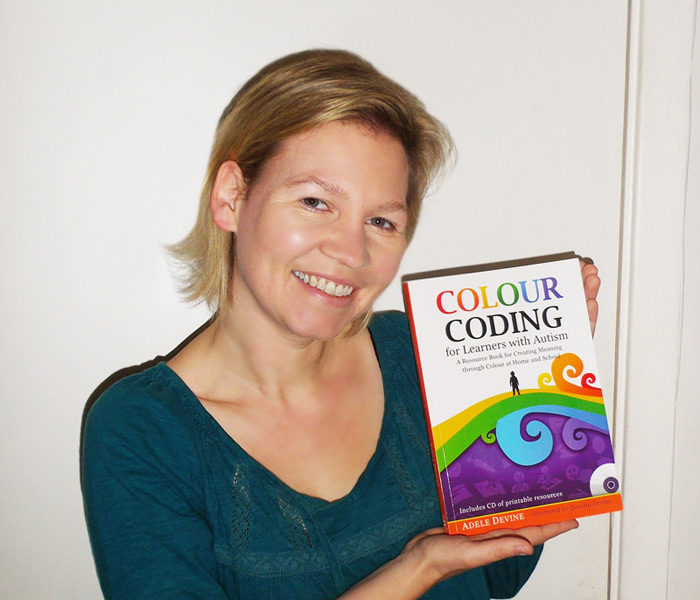Against The Clock – Use Visual Timekeeping To Help Structure Early Learners’ Days

Showing the passage of time in a visual way will help your special children stay on track, says Adele Devine…

- by Adele Devine

We use our satnavs, phones or watches to see time passing when we travel. We like to know how long we will be stuck in the car, the train or bus.
Our early learners are not yet able to read clocks, but they can learn time gaps between routines. They know that there’s a set distance between snack, lunch and nap. Many children will accept not knowing all the details; they’ll accept that they might have 10 minutes at the sand tray, or they might have half an hour. They are happy, content and pretty flexible.
Managing routines
Then there are those children who find the early years experience more difficult. Maybe they cling to mum at the door, refuse to sit for story time, lash out, run off or get ‘stuck’ at one activity. These children can learn to manage their anxiety – and maybe even learn to join in – but they will need a visual way to see and understand your session structure and know that time is passing. For this role, sand timers are brilliant. They clearly show time pass and seeing the sand fall through the timer can provide comfort and distraction for children. Sand timers are usually colour-coded and children can learn to link the colour with the amount of time.
In early years settings it’s a good idea to limit the timers used – I’d suggest having a one- or two-minute timer, and a second five- or 10-minute one. You can use timer symbols on the visual schedule too.
The majority of children may run to the carpet when you say ‘Story time!”, or leave the sand tray to sit down for a snack – but there will always be children who find these sorts of routines intolerable. They need to see and process what your expectations will be. They need time to process and decide if they can join in. Don’t try to change such children, but do try to see through their eyes and add the structures and supports they need.
And finally, don’t wait! Having visual schedules and timers ready before that special child arrives will improve his or her journey no end. As Benjamin Franklin once observed, “Lost time is never found again…”
Case study – Shakira’s short swims
Pool problems We knew Shakira liked to go swimming with her parents, but something about the school pool made her anxious. She needed time, so for the first few sessions Shakira got changed but stayed on the side of the pool, playing with the watering cans and watching.
By the second session she’d had a little paddle but resisted going further into the water. After a few sessions I sensed that Shakira wanted to go in the water. We needed to get past this phase before being on-the-side became routine.
Addressing anxiety When Shakira went to her visual schedule and took the swimming symbol off, I said, “Swimming. Today Shakira is going to go in the swimming pool.” Her little glance up showed me that she had heard. I wanted her to be able to process this before it happened. I took Shakira into the pool first so that there was no noise from other children. I sat behind her on the step and said, “We are going in the water.” I counted down from five and then we got in the water together. When the other children arrived, Shakira was floating about happily.
After five minutes another child started to make noise and I could sense Shakira’s anxiety building. She wanted to get out. I asked my teaching assistant to show Shakira the one-minute timer. As it was turned over, I said, “One more minute swimming, Shakira.” She watched the sand run through the timer.
The watching calmed her and when the sand had run through, I said, “Shakira can get out now. We will stay in the swimming pool for 10 more minutes. Well done, Shakira, for swimming today.”
Sand solutions Using the sand timer helped show Shakira how long was left and control her initial instinct, which was fight or flight. Keeping the swim session going for the rest of the children showed Shakira that even if she wanted to get out of the pool the session would continue.
Case study – Elliot’s extremely long day
Establishing routine Elliot had come to our setting from a mainstream nursery. It was immediately clear how much he appreciated having visual structure. We had an individual visual timetable set up for him and he very quickly realised that the information on the schedule related to his daily routine.
A change of schedule Elliot’s previous placement had been a half day. After lunch, Elliot would take the symbols off the schedule and get his coat. When I explained that this would not change things, he would become upset, but he slowly learnt to accept the longer day. Unfortunately, one of the children in the class was collected 15 minutes early, at which point Elliot would become upset again. It was horrible taking a tearful little boy to Mum, when he’d had an otherwise happy day.
Working together I phoned Mum and after a long conversation we decided together that it would be best for Elliot to finish his long school day 15 minutes early, so that he could end on a positive. We would review this in time, but for now it made sense to compromise.
This worked brilliantly, and it was lovely to send a happy Elliot home to a much less anxious Mum. That 15-minute compromise made such a difference.
Keeping track
Timers can help your special children by:
• Reducing the need for teacher talk. • Showing your expectations visually. • Allowing a child to mentally prepare. • Breaking your expectations down into steps. • Enabling you to compromise in a controlled way. • Providing a focus when a child is anxious. • Helping to build confidence and trust. • Acting as a tool for negotiation. • Maintaining a sense of order. • Reducing children’s fight/flight responses.
Adele Devine teaches full time in an autism specific school and is co-founder of the software developer, SEN Assist. For more information, visit www.senassist.com or follow @AdeleDevine











